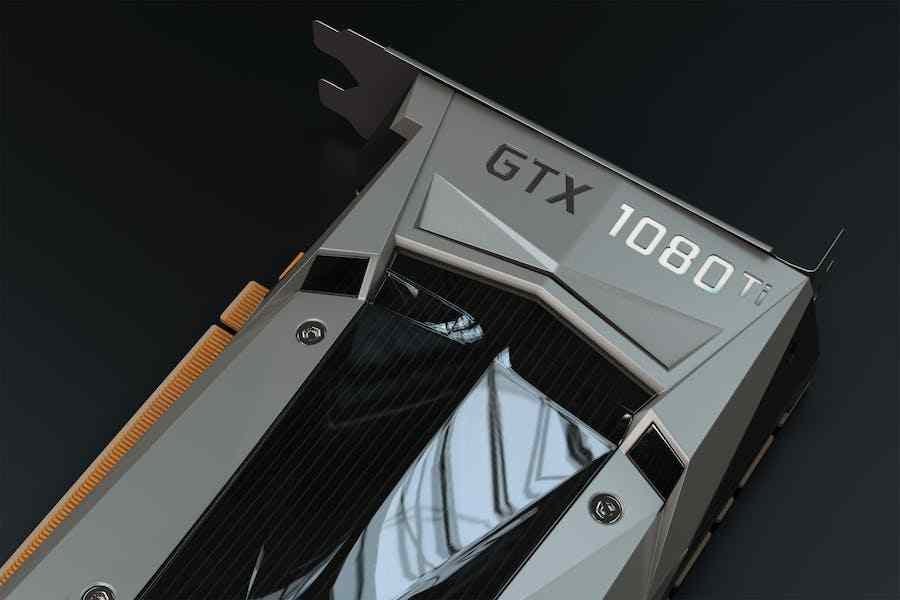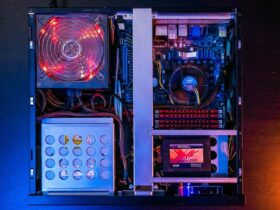In the ever-evolving world of gaming and high-performance computing, enthusiasts and users alike continually seek ways to enhance their GPU’s performance and efficiency. Undervolting a GPU has emerged as a fascinating technique to achieve this goal. This article delves into the intricacies of GPU undervolting, shedding light on what it entails, its benefits, and the potential risks involved. Whether you’re a seasoned overclocker looking to optimize your system or a curious newcomer exploring ways to improve your GPU’s performance, understanding the nuances of undervolting is essential. Let’s embark on a journey to demystify the concept of GPU undervolting and learn how it can be harnessed for a more efficient and enjoyable computing experience.
What Does Undervolting A GPU Do?
Undervolting a GPU involves reducing the voltage supplied to the graphics processing unit. This technique can yield several benefits, including enhanced power efficiency, reduced heat generation, and potentially a longer GPU lifespan. By lowering the voltage while maintaining stable performance, undervolting allows your GPU to operate more efficiently, producing less heat and consuming less power, which can be helpful for gaming, rendering, and other GPU-intensive tasks. However, it’s essential to tread carefully, as improper undervolting can result in instability or even reduced performance. It’s a valuable tool for enthusiasts looking to optimize their system’s performance and thermal management.
Why Undervolting Is Important?
Undervolting is important for several reasons, and its significance varies depending on your computing needs and goals. Here are the key reasons why undervolting is important:
Improved Energy Efficiency:
Undervolting reduces the voltage supplied to a component like a CPU or GPU, which results in lower power consumption. This is especially crucial for laptops and mobile devices, where battery life is a critical factor. By using less power, undervolting extends the time between charges, allowing for more extended periods of use on a single charge.
Reduced Heat Generation:
Lowering voltage reduces heat output from electronic components. This is vital for maintaining the stability and longevity of your hardware. Overheating can cause components to degrade faster, potentially shortening the lifespan of your CPU, GPU, or other critical components. Undervolting helps mitigate this by keeping temperatures in check.
Extended Component Lifespan:
Excessive heat and voltage can accelerate the wear and tear of electronic components. Undervolting helps prolong the lifespan of your hardware by running it within safer temperature and voltage ranges. This can save you money by delaying costly upgrades or replacements.
Quieter Operation:
Lower heat generation translates into less aggressive fan speeds. This means quieter operation, which can be particularly important for those who value a peaceful computing environment, whether for work or entertainment.
Stable Performance:
Undervolting can enhance the stability of your system. By preventing overheating and maintaining a consistent voltage supply, it reduces the likelihood of thermal throttling and system crashes, resulting in smoother and more reliable performance.
Environmental Impact:
Undervolting contributes to a greener and more sustainable computing experience. By using less electricity and generating less heat, you reduce your carbon footprint and energy bills, making your computing setup more eco-friendly.
Optimizing for Specific Tasks:
Undervolting allows users to customize their hardware settings to match their needs. For example, you can optimize your GPU for gaming or rendering, achieving better performance without excessive power consumption or heat output.
Balancing Performance and Efficiency:
Undervolting can be combined with overclocking (for GPUs) or tuning (for CPUs) to balance performance and efficiency. This allows you to get the most out of your hardware without compromising stability or risking overheating.
The Benefits Of Undervolting A GPU
Undervolting a GPU offers a range of substantial benefits, making it an appealing technique for novice users and seasoned enthusiasts. Let’s delve into these advantages in greater detail:
Improved Power Efficiency: Undervolting reduces the voltage supplied to the GPU, resulting in lower power consumption. This translates to energy savings, reduced electricity bills, and a smaller environmental footprint. For laptop users, in particular, this means extended battery life, enabling more prolonged periods of productivity or gaming on the go.
Reduced Heat Generation: One of the most immediate and tangible benefits of undervolting is the decrease in heat produced by the GPU. Lower voltage means less electrical resistance and, consequently, less heat generated during operation. This leads to cooler temperatures, which can have a cascading effect on your system’s overall performance and longevity.
Extended GPU Lifespan: Over time, excessive heat and voltage can wear down the components of a graphics card. By undervolting, you run your GPU within a more conservative thermal and electrical envelope. This can significantly prolong the lifespan of your GPU, ultimately delaying the need for an expensive upgrade.
Quieter Operation: Cooler GPUs require less aggressive fan speeds to maintain optimal temperatures. As such, undervolting often results in a quieter computing experience. Reduced fan noise can be particularly appreciated during intensive gaming or video editing sessions, as it contributes to a more pleasant and immersive environment.
Stable Performance: Contrary to common misconceptions, undervolting doesn’t necessarily mean sacrificing performance. It can lead to more stable and consistent performance. By optimizing voltage and reducing heat, undervolting can help your GPU maintain higher clock speeds over more extended periods without encountering thermal throttling or power limitations.
Overclocking Potential: Undervolting can be combined with overclocking to find an ideal balance between performance and efficiency. By carefully adjusting voltage and clock speeds, you can push your GPU to higher performance levels without pushing it beyond its thermal limits. This allows you to get the most out of your hardware.
Reduced Fan Noise: As mentioned earlier, lower GPU temperatures mean that the GPU fans don’t need to spin as fast or as frequently. This results in a quieter computing environment, which is particularly appreciated when noise levels matter, such as home offices or media rooms.
Environmental Benefits: Lower power consumption and reduced heat generation have positive environmental implications. By using less energy, you’re contributing to a greener, more sustainable computing setup. This not only benefits your wallet but also helps reduce the overall carbon footprint associated with your PC usage.
How To Undervolt A GPU Safely?
Undervolting a GPU can bring significant benefits, but it must be done carefully to ensure your graphics card operates efficiently and reliably. Here’s a detailed guide on how to undervolt a GPU safely:
Before you start undervolting, it’s essential to gather information about your specific GPU model. Different GPUs have different voltage requirements and tolerances. Consult your GPU manufacturer’s specifications, forums, or user guides to understand the typical voltage ranges for your GPU.
To undervolt your GPU, you’ll need specialized software. Popular options include MSI Afterburner, EVGA Precision X, or software provided by your GPU manufacturer (e.g., AMD Wattman or Nvidia Inspector). Download and install the software, ensuring it’s compatible with your GPU.
Before making any changes, backup your GPU’s default settings. Most undervolting software allows you to save profiles. This is crucial if you encounter stability issues or need to revert to the original settings.
Start the undervolting process by reducing the GPU’s voltage incrementally. Begin with a slight reduction, such as -10mV, and test your GPU’s stability under load. Continue gradually decreasing the voltage until you notice any instability, such as artifacts, crashes, or system freezes.
To ensure the undervolted settings are stable, test your GPU using software like FurMark or 3DMark. Run these tests for an extended period to simulate real-world usage. Monitor for any instability issues or graphical glitches. If the GPU remains stable, you can proceed with further voltage reductions.
Throughout the undervolting process, keep a close eye on your GPU’s temperatures and performance metrics. Most undervolting software provides real-time monitoring features. Ensure that the temperature remains within safe limits and that your performance meets your expectations. A well-undervolted GPU should maintain performance while running cooler and more efficiently.
Risks And Considerations
- Undervolting your GPU may void its warranty, which involves modifying the card’s default settings. Check your GPU manufacturer’s warranty policy before proceeding with undervolting. Some manufacturers allow undervolting within certain limits, while others may not.
- If you undervolt too aggressively or without proper testing, your GPU may become unstable. This can result in system crashes, graphical artifacts, or even a complete system freeze. To avoid this, always incrementally reduce voltage and thoroughly test for stability.
- Undervolting may not work well with all GPU models or brands. Some GPUs are more tolerant of voltage adjustments than others. Research your specific GPU model to determine its undervolting potential and whether others have successfully undervolted it.
- While undervolt typically maintains or improves performance in most cases, there may be scenarios where it doesn’t. In situations where a GPU is already running efficiently and not generating excessive heat or power consumption, undervolting might not provide noticeable benefits and could even lead to slight performance reductions.
- Undervolting requires a learning curve. You must familiarize yourself with undervolting software, stress-testing procedures, and monitoring tools. It may take time and experimentation to find the optimal undervolt settings for your specific GPU.
Bottom Line
Undervolting a GPU is a powerful technique with the potential for substantial benefits, including improved power efficiency, reduced heat generation, extended hardware lifespan, quieter operation, and stable performance. However, it’s essential to approach undervolting cautiously, considering the potential risks such as warranty implications, system instability, compatibility issues, and the need for a learning curve. Responsible experimentation, thorough research, and diligent monitoring are vital to unlocking the advantages of Undervolt while minimizing its drawbacks. When done correctly, undervolting can be a valuable tool for optimizing your GPU’s performance and efficiency, contributing to a more sustainable and enjoyable computing experience.
FAQ’s
What is GPU undervolting?
GPU undervolting is the process of reducing the voltage supplied to a graphics processing unit (GPU) to achieve various benefits, such as improved power efficiency and reduced heat generation.
How does undervolting differ from overclocking?
While undervolting reduces the voltage to improve efficiency and reduce heat, overclocking increases clock speeds to enhance performance. They are distinct techniques, but they can be combined to balance performance and efficiency.
Can undervolting harm my GPU?
When done correctly, undervolting should not harm your GPU. However, overly aggressive voltage reductions can lead to instability or performance issues. Responsible undervolting and monitoring are essential to avoid harm.























Leave a Reply